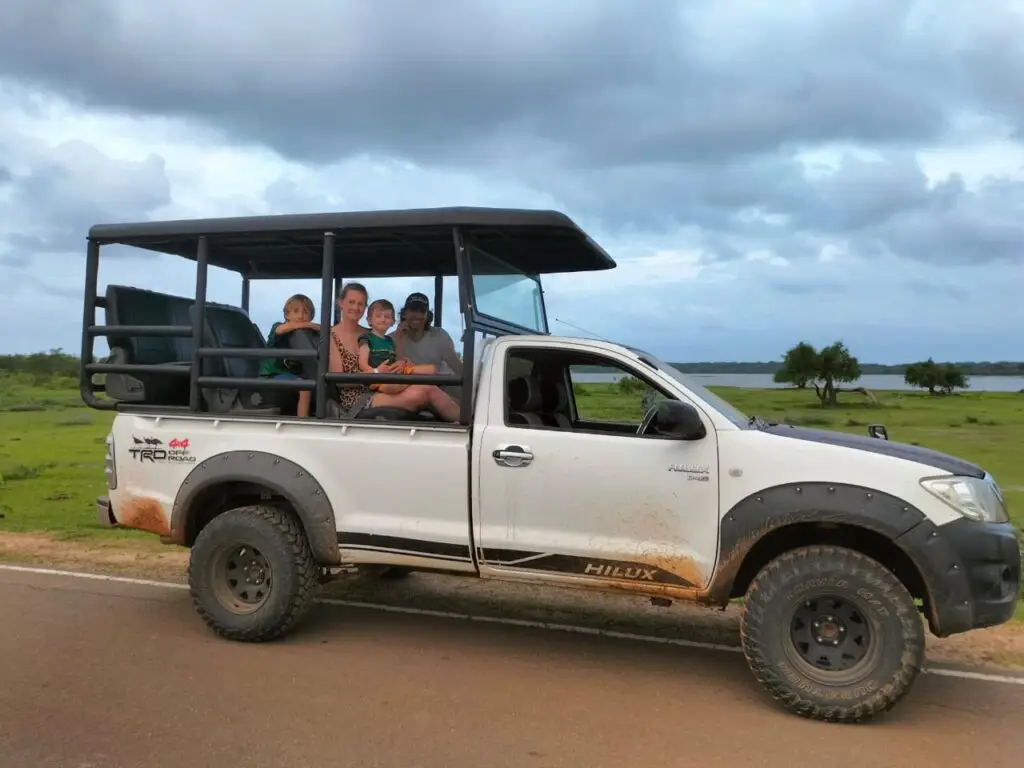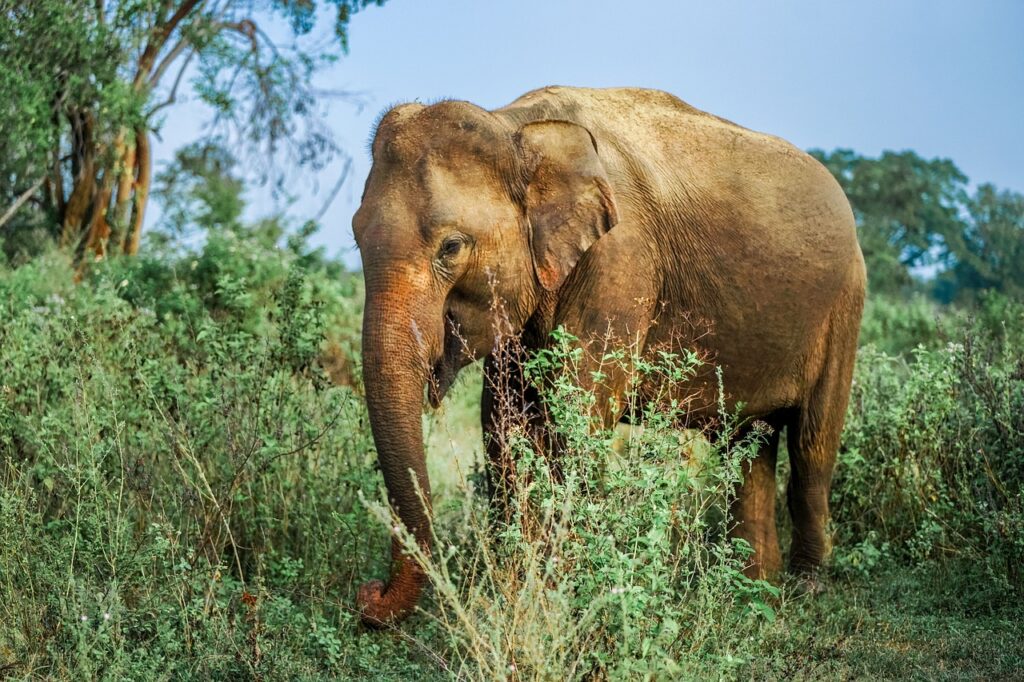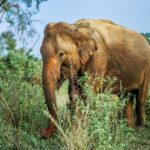Introduction to Sri Lanka wildlife safari
Sri Lanka, an island nation nestled in the Indian Ocean, is renowned for its breathtaking landscapes and rich biodiversity. With its unique geographical features, ranging from lush forests to arid plains, Sri Lanka offers an unparalleled setting for wildlife safaris. This tropical paradise is home to an impressive array of flora and fauna, making it a premier destination for wildlife enthusiasts and nature lovers alike. The island’s national parks and protected areas serve as sanctuaries for a variety of species, including elephants, leopards, and more than 400 bird species, helping to establish Sri Lanka as a significant player in the global wildlife tourism industry.
One of the key attractions of a wildlife safari in Sri Lanka is the opportunity to observe these magnificent creatures in their natural habitats. The country boasts several national parks, with Yala National Park being the most famous for its leopard population and diverse ecosystems. Other notable parks such as Udawalawe, Minneriya, and Wilpattu provide visitors with chances to encounter not just large mammals but also a stunning variety of reptiles, insects, and birds. Each national park offers a distinct experience, catering to different interests and wildlife viewing preferences.
Furthermore, the motivation for participating in a Sri Lanka wildlife safari varies among visitors. For some, the allure lies in the chance to witness and photograph the diverse wildlife, while others seek to engage with nature and appreciate the intricate balance of ecosystems. Regardless of the reason, wildlife safaris in Sri Lanka are an invitation to experience the island’s unique fauna and compelling natural beauty, offering an adventure that intertwines relaxation and excitement. As we delve deeper into the specifics of these safaris, it becomes evident that every journey provides a profound connection to the remarkable wildlife that inhabits this beautiful island.
Top National Parks for Wildlife Safaris
Sri Lanka is renowned for its rich biodiversity and stunning landscapes, making it a premier destination for wildlife enthusiasts. Among the many natural reserves in the country, several national parks stand out for their remarkable ecosystems and the variety of safari experiences they offer. Yala National Park, Udawalawe National Park, and Wilpattu National Park are among the top destinations for an unforgettable Sri Lanka wildlife safari.
Yala National Park is perhaps the most famous of all, known for its high density of leopards, making it a prime location for those seeking to observe these elusive cats in their natural habitat. The park spans across 979 square kilometers and is characterized by its dry monsoon forests, grasslands, and lagoons. Visitors can enjoy jeep safaris, which provide an excellent vantage point for wildlife viewing, as well as guided walking safaris for those who wish to explore the park more intimately.
Meanwhile, Udawalawe National Park is celebrated for its elephant population. It serves as a sanctuary for orphaned and rescued elephants, providing visitors with the unique opportunity to observe these majestic creatures up close. The park features a mix of open grasslands and scrublands, making it easier to spot wildlife. Jeep safaris are the most popular way to explore Udawalawe, and the experience often includes sightings of various bird species, water buffalo, and other mammals.
Wilpattu National Park, known for its natural lakes, offers a different ambiance altogether. It is less crowded than Yala and is perfect for those seeking a more tranquil wildlife safari experience. The park is home to a variety of wildlife, including leopards, sloth bears, and a plethora of birds. Wilpattu is unique in that it provides both jeep and walking safaris, allowing visitors to immerse themselves in the pristine nature and diverse ecosystems.
Each of these national parks showcases the incredible biodiversity of Sri Lanka and offers various types of safaris tailored to different preferences. Travelers can choose the park that best fits their wildlife viewing desires, ensuring a memorable experience during their Sri Lanka wildlife safari.
Best Time to Go on Safari
When planning a wildlife safari in Sri Lanka, timing is essential to ensure an optimal experience. The island’s diverse climate, coupled with the seasonal behaviors of its wildlife, plays a crucial role in determining the best period for observing animals in their natural habitat. Generally, the dry seasons, which run from April to September and December to March, are considered the ideal times for a safari in Sri Lanka, as the lower water levels force animals to congregate around remaining water sources, making them easier to spot.
During the months of April to September, the north-eastern monsoon influences the climatic conditions, resulting in relatively dry weather in key parks such as Yala and Udawalawe. This period sees a significant gathering of elephants, as they migrate towards these parks. The dry season not only enhances visibility for tourists but also offers abundant opportunities to view other animals such as leopards, deer, and various bird species. Furthermore, the months of December to March correspond to the peak tourist season, characterized by pleasant weather, making this another excellent time for a wildlife safari.
However, it is important to note that weather patterns may vary. The south-western monsoon occurs from May to August, particularly impacting areas like Sinharaja Forest Reserve, where rains could hinder wildlife visibility. Additionally, some migratory bird species can be observed from November until March, adding another dimension to wildlife safaris during this time. To make the most of a Sri Lanka wildlife safari, thorough research and consideration of these seasonal patterns are advisable, ensuring that visitors experience the rich biodiversity without setbacks from adverse weather conditions.
Wildlife Species to Spot on Safari
Sri Lanka, a renowned destination for wildlife safaris, is home to an astonishing variety of animal species that inhabit its lush national parks and reserves. Among the most iconic creatures found on these excursions are the Asian elephants. The country holds one of the largest populations of wild Asian elephants, which can often be observed in herds, particularly in parks like Udawalawe and Minneriya. Their majestic presence captivates visitors, making the sri lanka wildlife safari experience truly unforgettable.
Another notable species is the elusive Sri Lankan leopard, a subspecies recognized for its unmatched prowess as a solitary predator. These leopards can be frequently spotted in Yala National Park, where they roam the diverse landscape, showcasing their stealth and agility. Observing a leopard in its natural habitat not only provides a thrilling encounter but also highlights the importance of preserving these magnificent creatures for future generations.
Birdwatchers will find Sri Lanka a paradise teeming with avian diversity. The island is home to nearly 500 species of birds, with around 33 endemic to the region. Prominent bird species include the Sri Lanka blue magpie, the crimson-fronted barbet, and the Ceylon junglefowl, each exhibiting unique behaviors and vibrant plumage. Such rich biodiversity emphasizes the ecological importance of sanctuaries like Bundala and Sinharaja, where these species thrive amidst varied ecosystems.
In addition to these highlights, species ranging from water buffalo and sloth bears to a plethora of reptiles and amphibians contribute to the country’s vibrant ecological tapestry. Embracing the opportunity to witness these animals in their natural habitats not only enriches the safari experience but also fosters a deeper appreciation for the island’s environmental wealth and the need for conservation efforts. The diverse wildlife of Sri Lanka is not merely a visual treat but a narrative of biodiversity waiting to be explored.
Planning Your Safari: Tips and Essentials
Embarking on a sri lanka wildlife safari is an exhilarating experience, and planning one requires careful consideration to ensure a memorable adventure. The first step in planning your safari is selecting the right tour operator. Research various companies, read reviews from previous travelers, and assess the packages they offer. Look for operators who prioritize responsible tourism and adhere to eco-conscious travel practices, as this will enhance your wildlife experience while protecting the delicate ecosystems.
Packing appropriately for your safari is crucial. Lightweight, breathable clothing in neutral colors helps with comfort and minimizes your visibility to wildlife. Don’t forget essentials like a wide-brimmed hat, polarized sunglasses, and sunscreen to shield yourself from the sun. Binoculars and a camera with a zoom lens will enhance your ability to observe and capture the magnificent creatures you encounter. Additionally, pack insect repellent, as mosquitoes are prevalent in some safari areas.
Safety is paramount while exploring the beauty of Sri Lanka’s national parks. Always follow the guidelines provided by your tour operator and park rangers, and stay within the safari vehicle unless instructed otherwise. Avoid making sudden movements or loud noises that might startle the animals. Understanding animal behavior can enrich your experience, so familiarize yourself with the species you hope to see beforehand.
Accommodations can vary from luxury lodges to more rustic eco-friendly options. Depending on your budget and preferences, consider booking a stay that aligns with your eco-conscious values as well. Furthermore, transportation options for your safari can include guided jeep tours or self-drive experiences, each offering distinct advantages. Planning in advance can help ensure all your dietary needs are met, as some lodges offer tailored meals to accommodate specific requirements.
Ultimately, thoughtful planning ensures that your sri lanka wildlife safari is not just enjoyable, but also enriching and respectful towards the unique wildlife and habitats you will explore.
Types of Safari Experiences Available
Sri Lanka, renowned for its rich biodiversity and stunning landscapes, offers a variety of wildlife safari experiences that cater to diverse preferences and adventure levels. The most popular safari option is the guided jeep safari, allowing travelers to explore national parks such as Yala and Udawalawe. These safaris typically feature knowledgeable guides who provide insightful information about the local flora and fauna. Travelers can enjoy the thrill of spotting elephants, leopards, and numerous bird species while comfortably navigating through the park in a rugged jeep.
For those seeking a more immersive experience, walking safaris present an excellent opportunity to connect intimately with nature. Accompanied by experienced naturalists, participants can explore the wilderness on foot, observing wildlife up close and learning about the ecosystem. Although walking safaris offer unique perspectives and adventures, they may not be suitable for individuals with mobility issues or those seeking to cover larger distances quickly.
Another fascinating option is the night safari, which allows for exploration of wildlife activity after sunset. This type of safari typically involves a guided jeep ride through the parks during the evening hours, providing unique opportunities to witness nocturnal species such as civets, porcupines, and maybe a glimpse of a leopard. However, potential limitations may arise as visibility can be reduced, and animal behavior varies at night.
Lastly, boat safaris enable travelers to experience wildlife from a different vantage point. These excursions often run along Sri Lanka’s numerous rivers and wetlands, attracting birds and aquatic animals. While boat safaris can be relaxing and serene, they may limit the types of wildlife encounters compared to land-based safaris. Ultimately, selecting the right safari experience depends on individual interests, preferences for adventure, and the unique wildlife one hopes to witness in this vibrant ecosystem.
Responsible Wildlife Tourism in Sri Lanka
The exquisite landscapes and rich biodiversity of Sri Lanka make it a prime destination for wildlife safaris. However, as the popularity of these experiences grows, so does the need for responsible wildlife tourism practices. Tourists are increasingly recognizing that their actions can significantly impact the environment and wildlife. Ethical tourism fosters a sustainable approach that benefits both visitors and local ecosystems.
One of the primary concerns surrounding wildlife safaris is the potential disruption of natural habitats. Organizations and conservationists stress the importance of minimizing human impact. Tourists should adhere to guidelines provided by park authorities, such as maintaining a respectful distance from animals and refraining from feeding or provoking wildlife. Such practices not only ensure the safety of both animals and visitors but also allow local creatures to thrive in their natural surroundings.
In addition to preserving wildlife, responsible tourism helps fund conservation efforts. Many safari operators in Sri Lanka contribute a portion of their profits to local conservation projects, which focus on habitat protection and wildlife rehabilitation. Visitors can enhance their safari experience by choosing operators that prioritize ethical practices and support conservation initiatives. This personal choice empowers travelers to contribute positively to wildlife preservation while enjoying breathtaking encounters with Sri Lanka’s diverse species.
Moreover, travelers should consider their social impact on local communities. Engaging with indigenous cultures and supporting local businesses promotes economic growth and fosters an appreciation for Sri Lanka’s rich heritage. Ethical wildlife tourists often venture into local markets or tour community-led projects, thereby ensuring that tourism profits benefit the region’s inhabitants, enhancing their livelihoods.
By recognizing the interconnectedness of wildlife and community, travelers can enjoy a fulfilling Sri Lanka wildlife safari experience while promoting sustainable and responsible tourism practices. In conclusion, being a responsible tourist not only fosters wildlife conservation but also supports the vibrant cultures of Sri Lanka, contributing to a more sustainable future for both nature and local communities.
Accommodation and Facilities Near National Parks
When planning a sri lanka wildlife safari, selecting the right accommodation plays a crucial role in enhancing the overall experience. Visitors to Sri Lanka can choose from a variety of lodging options that cater to different preferences and budgets, each offering unique benefits. The region surrounding various national parks is dotted with accommodations ranging from luxury lodges to eco-resorts and camping sites.
Luxury lodges, such as those located close to Yala and Udawalawe National Parks, provide premium amenities and services, ensuring an unforgettable stay. These establishments often feature spacious rooms, delectable dining options, and personalized guided tours, enabling guests to fully immerse themselves in the natural surroundings while enjoying modern comforts. Staying at such luxurious accommodations typically allows for easy access to morning and evening safaris, which are essential for observing wildlife in their natural habitats.
For eco-conscious travelers, eco-resorts present an appealing choice. These resorts prioritize sustainability and offer a more integrated experience with nature. Often built using environmentally friendly materials and powered by renewable energy sources, eco-resorts not only reduce their impact on the environment but also provide unique opportunities for guests to engage in activities such as bird watching and nature hikes. Proximity to national parks is a significant advantage, as it enhances wildlife sightings while minimizing travel time.
For those seeking adventure at a lower cost, camping options are abundant. Campers can experience the thrill of sleeping under the stars while being surrounded by the sounds of wildlife. Some parks even offer organized camping safaris, which include trained guides to ensure safety and provide insights into the flora and fauna. Regardless of the choice of accommodation, considering factors such as proximity to parks and available facilities is vital in maximizing the enjoyment of a wildlife safari in Sri Lanka.
Conclusion and Final Thoughts
Throughout this guide, we have explored the unique offerings of a wildlife safari in Sri Lanka, highlighting its rich biodiversity, stunning landscapes, and diverse ecosystems. From the famous Yala National Park, renowned for its leopard population, to the lush greenery of Udawalawe with its majestic elephants, each location presents a one-of-a-kind experience. Engaging with the region’s wildlife can provide travelers with invaluable opportunities to learn about conservation efforts and witness animals in their natural habitats.
Sri Lanka’s wildlife safaris are not merely about observing animals; they also foster a deeper connection with nature and promote sustainable tourism practices. The country’s commitment to protecting its natural heritage means that visitors can enjoy the thrill of encountering wildlife while contributing to essential conservation efforts. Additionally, the variety of safari options available—ranging from jeep tours to eco-friendly lodges—allows for a tailored experience that meets the preferences of every traveler.
Moving forward, planning a wildlife safari in Sri Lanka is an endeavor filled with promise. The encounters with animals such as elephants, leopards, and a multitude of bird species serve to create lasting memories and inspire a greater appreciation for the environment. As global awareness of biodiversity conservancy continues to rise, Sri Lanka stands out as a prime destination for those eager to explore and cherish nature’s wonders.
In conclusion, embarking on a wildlife safari in Sri Lanka offers a remarkable adventure that combines excitement with education. We encourage you to consider this beautiful island for your next wildlife exploration and engage in the enriching experiences it has to offer. Discover the magic of Sri Lanka’s wildlife and create unforgettable memories that will last a lifetime.





















